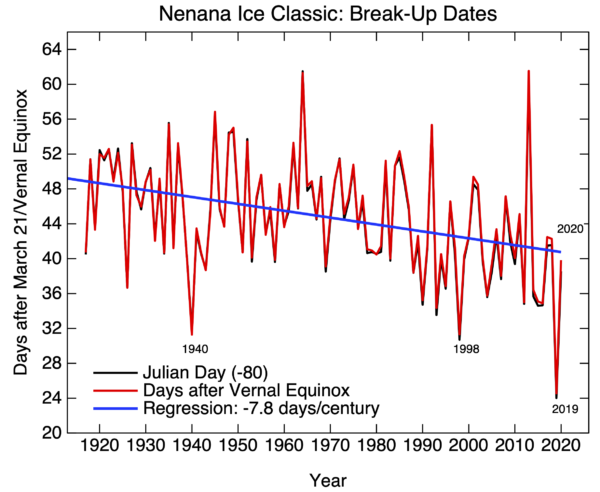Recently, a so-called “white coat summit” gave me a sense of dejavu. It was held by a group that calls itself ‘America’s Frontline Doctors’ (AFD) that consisted of about a dozen people wearing white coats to the effect of achieving an appearance of being experts on medical matters.
The AFD apparently wanted to address a “massive disinformation campaign” (what irony) and counter the medical advice from real health experts. This move has a similar counterpart in climate science, where some individuals also have claimed to be experts and dismissed well-established scientific facts, eg. that emissions of CO2 from the use of fossil fuels results in global warming.
Climate science is not the only discipline where we see confusion sown by a small number of “renegades”. A few white-coated scholars have disputed the well-established danger of tobacco. We see similar attitudes among the “Intelligent Design” community and the so-called “anti-vaxxers”.
Statistically speaking, we should not be surprised by a few contrarians who have an exceptional opinion within a large scientific community. It is to be expected from a statistical point of view where there is a range of opinions, so there should be little reason to make a big deal out it.
On the other hand, there are some fascinating stories to be told. Sometimes there are individuals who can be described as “crackpots” and “quakesalvers” (e.g. a scholar believing in dowsing rods among the climate renegades and some within the AFD who talk about demons). Hollywood has even realized that some scientists may be mad, which has given us the familiar term “mad scientist”. But all “renegades” may of course not necessarily be mad.
Nevertheless, according to Snopes, the background of the individuals of the AFD is rather colourful. And there is nothing in the background provided about them that gave me any confidence in their judgement. On the contrary.
A sign that should trigger a big warning is that Snopes found it difficult to see who the AFD really are or where their conclusions really come from. The transparency is lacking and their story is murky. Especially so if the results have not been published through renowned peer-reviewed scientific journals. This is something we have seen time and again with climate change contrarians.
Any claim would be more convincing if colleagues independently are able to replicate the work and get the same results (without finding anything wrong with the process). This would require transparency and openness.
Another sign that should make you skeptical is if the claims have a dogmatic character. The AFD address is all dogma. This is also typical among the science deniers.
It’s also typical that the extreme fringes cannot falsify the established science and therefore move on to conspiracy theories. In the case of AFD, it is the alleged “massive disinformation campaign”.
Should we take such fringe views seriously? This type of “infodemics” seems to become a growing problem as described in a feature article in Physics World July 2020: ‘Fighting flat-Earth Theory’. The term “infodemic” reflects the fact that false information is just as contagious as an epidemic. Imposters dressed in white coats peddling false information can cause harm if people take them seriously.
The damage caused by erroneous information and conspiracy theories is discussed in the HBO documentary ‘After truth’, and the wildest claims can spread like a rampant disease as shown in that film.
We have witnessed how misinformation and lack of trust of true medical sciences have caused bad situations in some countries, while in others (eg. New Zealand, Canada, and some Nordic countries) the pandemic has been kept under control because the general public in general has followed the scientific health advice.
There is a common denominator when it comes to the AFD, anti-vaxxers, flat-earthers, “intelligent design”, chem-trail evangelists and those dismissing climate science. I think it may be useful to join forces within the broader scientific community to help the general public understand the real issues. This effort should also be on more general terms. People have a right to reliable and truthful information. Everybody should understand that anyone who spreads bullshit or lies also shows you a great deal of disrespect. The same goes for platforms spreading disinformation.
So what can we do to make people understand how science works and enhance the general science literacy? Is it better to teach people how to spot these “alternative scientists” (the term is inspired by “alternative facts”), conspiracy theories, and falsehoods, if we show a range of examples from different disciplines? We can probably learn from each others. There seems to be a lesson to be learned from the pandemic.
